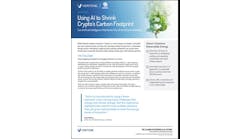US Governors Recommend New Push for Energy Efficiency in Multifamily Housing
More and more people are moving to cities. Fewer are buying houses. So demand is increasing for apartments and condos. Unfortunately, energy efficiency in multifamily buildings is sorely lacking.
However, that may soon change. It appears that the sector may get a boost from U.S. governors.
The National Governors Association recently issued a report that recommends a range of actions states can take to improve energy efficiency in this hard-to-reach but important sector.
States have traditionally given more attention to energy efficiency in single family homes than in apartments and condos. The governors are focusing on multifamily housing following a steep rise in demand for apartments — a doubling from 2000 to 2010 for market-rate multifamily housing. Meanwhile, the rate of home ownership fell to 64 percent—the lowest level since 1994, according to the report.
As a result, one-third of the U.S. population finds itself in multifamily buildings. Cost-effective energy efficiency investments could lower their bills by $3.4 billion annually, according to a study by the American Council for an Energy-Efficient Economy, cited in the report. About 30 percent of savings would come from natural gas and 15 percent from electricity use.
“Reducing energy costs is a top priority many governors share,” said Massachusetts Gov. Charlie Baker, a Republican.“By including multifamily homes in state energy-efficiency strategies, we can lower consumers’ electricity bills and strengthen overall system reliability, which is a win-win.”
It’s never been an easy sector when it comes to saving energy; several inherent barriers exist that discourage energy efficiency in multifamily housing. The most obvious is that building owners — those who pay for the LEDs, retrofits and other improvements — do not benefit financially from lower energy bills. Instead, the tenants do. So the incentives are misaligned.
There are several other factors that discourage energy efficiency in multifamily buildings, among them high upfront costs, lack of financing and public funding, complex ownership structures, and unfriendly HUD rules.
Yet, these buildings desperately need help. About three-quarters of multifamily buildings in the U.S. were built before 1980, before the days of residential building codes for energy efficiency, the report says.
So what’s ahead for the sector? To fix the problem, the governors are supporting a range of new collaborations among state agencies, legislatures, utilities, and building owners.
Here are some specifics that the report recommends.
- Convene stakeholders to help encourage innovative solutions in the multifamily sector
- Issue executive orders that create multifamily energy-efficiency programs
- Incorporate multifamily buildings into state goals for efficiency
- Create one-stop shops for educational resources on investment in energy efficiency in the multifamily sector
- Improve access to funding for investments in energy efficiency in multifamily housing and affordable housing
- Align workforce training programs targeted to provide workers with the skills to improve energy efficiency with state energy policies and business attraction goals.
Issued July 1, the full report, “Governors’ Roadmap for Improving the Energy Efficiency of Multifamily Buildings,” is available here.
What problems have you faced in trying to develop energy efficiency in multifamily housing? Let us know in comments below or on our Linkedin Group, Energy Efficiency Markets.





